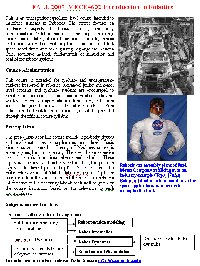 |
|
| [an error occurred while processing this directive] | |
MECE4602 Introduction to RoboticsClick here for printable PDF poster This is an undergraduate/graduate level course intended to introduce students to Robotics. The course focuses on the fundamental aspects of robotics including: rigid body transformations (rotation matrices, screw representations), kinematics modeling of serial and parallel robots, inverse and direct kinematics, motion planning in joint and task space, robot dynamic modeling using Lagrange and Newton Euler recursive method, fundamentals of control for robotic systems. Course AdministrationThis course is intended for undergraduate students and graduate students interested in robotics. Junior and senior level students and graduate students are encouraged to register for this class. The course requirements include few bi-weekly homework assignments, mid-term exam, and a term project designed to showcase the students' skills. More details on the breakdown of percentages will be provided through the official course syllabus. PrerequisitesThe prerequisites for this course include rigid-body physics and mathematics as a sophomore/junior level. Basic kinematics as covered in Theory of Machines course is advantageous, but not necessary. There will be an extensive use of methods from linear algebra and calculus. These topics will be reviewed and covered in class, but previous exposure to these topics is helpful. The course will also make extensive use of Matlab (Mathematica or Maple are acceptable too) for simulations and for homework sets. An introduction of the necessary Matlab tools will be given by the course instructors prior to each homework set. Subjects covered in class
Text booksThe instructor will provide his own material throughout the lectures. There are plenty of robotics text books out there. Most of the introductory text books on robotics will cover a large portion of the material given in class. The following text book will be used in class:
Other optional text books include:
|
|
| [an error occurred while processing this directive] | |
